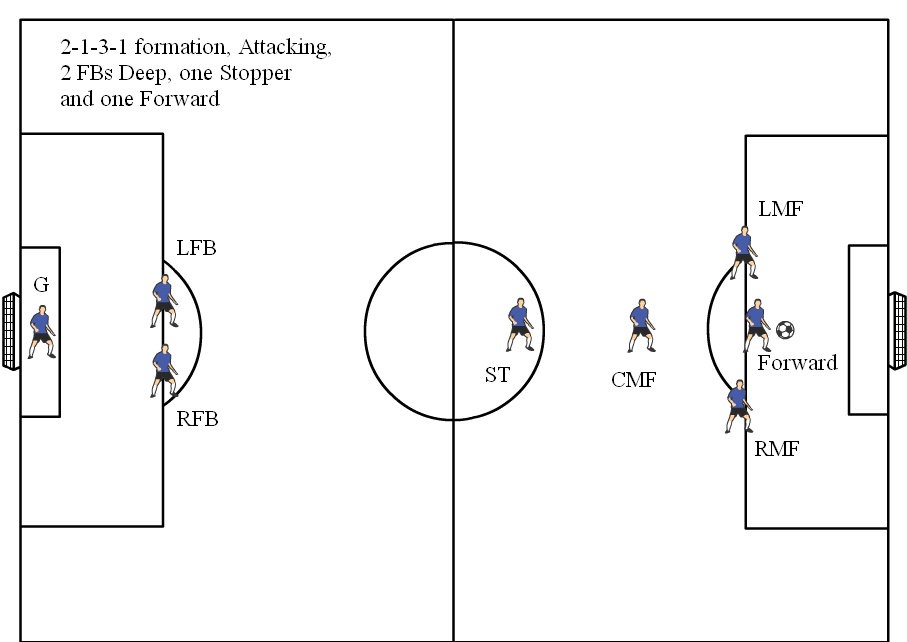Youth Soccer Formations
Youth soccer formations are explained and how to select the best formation for your team.
Your soccer formation determines how many players you will have at Fullback, in the Midfield, and at Forward. You might also have a Sweeper and Stopper(s). The numbering of formations always starts with the players nearest to the Goalkeeper but does not include the Goalkeeper. For example, if you play 8v8, a 3-3-1 soccer formation would be 3 Fullbacks 3 Midfielders and 1 Forward, and a 1-2-1-2-1 soccer formation would be a Sweeper, 2 Fullbacks, a Stopper, 2 Midfielders and 1 Forward. Those numbers add to 7 and when the Goalie is added the total is 8.
U4 and U6 youth soccer coaches don't need to worry about formations, just have fun, but starting at U8 you try to should choose the formation that works best for your team.
Your soccer formation really makes a difference and it is very important to choose a formation that gives your team a chance to be successful. The formation you choose should be based on an analysis of your team, the length of the field you play on, and your competition. The soccer formation you choose should consider HOW your team plays. For example, do your Fullbacks "push up" when you attack? Or do you leave your Fullbacks deep when you attack? Most youth soccer coaches can safely push up the Fullbacks to support the attack until U10 because the opposing teams aren't very good at fast counterattacks. But starting at U10 you need to be careful about pushing up slow fullbacks against fast forwards. The difference it makes is that if you don't push up your Fullbacks your attack will lack support and you might want to consider a formation that has a Stopper.
When choosing a youth soccer formation and a "style of play" (these go hand-in-hand) it is important to evaluate your players to determine how many slow players you have, how many unskilled players you have, and how many timid players you have who are afraid of contact. You can't put timid players at Fullback - you need brave players at Fullback (although they can be slow). And you want players in the Center of the Field who have skills or are good athletes. The best place for timid players is at Left Midfield or Right Midfield. So, for example, if you have timid players, soccer formations like a 2-1-3-1 or a 3-2-3-2 are good because you can put a strong player at Center Midfielder and timid or weak players at Left Midfield or Right Midfield.
Youth Soccer Formations will take you to a great deal of information about soccer formations, including illustrations of different formations. There are hundreds of pages on SoccerHelp about how to select and teach soccer formations, positions and styles of play.
The diagram below shows an example of a soccer formation for a team playing 8v8. It is just one of many alternatives if you play 8v8. In it, the Fullbacks are not pushing up, which is more likely for a Recreational team than it is for a Select Team that has fast fullbacks. Click the above link for a detailed explanation of how to choose the soccer formation and style of play that is best for your team. Soccer formations are explained for 8v8, 11v11, 7v7, 6v6, 9v9, 5v5, 4v4 and 3v3 for both outdoor and indoor play.

Copyright 2013